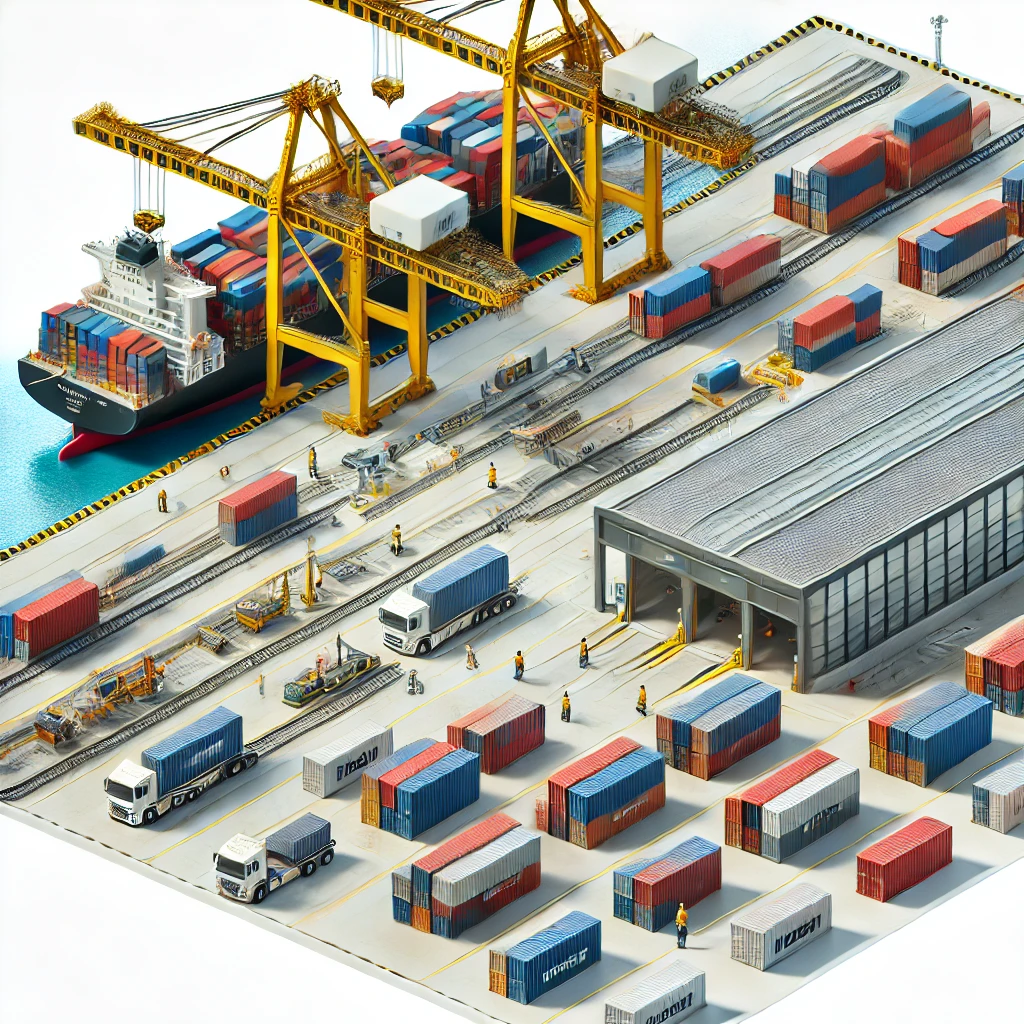The Basics of FOB Shipping Point
What is FOB Shipping Point?
FOB Shipping Point is a shipping term used in international trade and contracts that determines the point at which the risk of loss or damage to goods transfers from the seller to the buyer. In an FOB Shipping Point arrangement, the seller fulfills their obligation once the goods are shipped, and the buyer assumes responsibility once the goods leave the seller’s premises.
It is one of the key Incoterms (International Commercial Terms) that guides the responsibilities of buyers and sellers in transactions involving the transportation of goods.

Key Features of FOB Shipping Point
- Transfer of Ownership:
- Ownership of the goods transfers to the buyer once the goods are shipped from the seller’s premises.
- This means the buyer is responsible for the shipping costs, risks, and insurance from the point of shipment onward.
- Seller’s Responsibility:
- The seller is responsible for the cost and risk until the goods are loaded onto the shipping vessel or transport at the shipping point.
- The seller must ensure the goods are packed properly for shipping and fulfill any customs duties before shipping.
- Buyer’s Responsibility:
- Once the goods are shipped, the buyer assumes responsibility for the transportation costs, including insurance, freight, and customs duties.
- The buyer also takes on the risk of loss or damage to the goods during transit.
- Customs and Taxes:
- In FOB Shipping Point, the buyer is also responsible for import duties, taxes, and customs clearance once the goods arrive at their destination.
How FOB Shipping Point Works
The FOB Shipping Point system is commonly used in both domestic and international trade. Here’s how it works:
- Seller’s Role: The seller’s responsibility is to ensure the goods are delivered to the carrier (such as a shipping company) at the agreed shipping point. They also need to load the goods onto the vehicle, train, or ship.
- Buyer’s Role: The buyer is responsible for any costs and risks after the goods have been shipped. This includes freight charges, insurance, and customs fees at the destination.
- Shipping Point: The “shipping point” is the location where the transfer of ownership and responsibility takes place. Typically, this is the seller’s warehouse or the location where the goods are shipped out to the buyer.
- Risk of Loss: In an contract, risk transfers to the buyer as soon as the goods are shipped. If the goods are lost or damaged during transit, the buyer is responsible for the loss, even if the goods are in transit.

Practical Uses of FOB Shipping Point
- International Trade:
- FOB Shipping Point is especially useful in international trade agreements. It defines clear lines of responsibility between the buyer and seller, avoiding confusion during transit.
- Inventory and Shipping Management:
- For businesses that manage shipping and logistics, understanding FOB helps in managing inventory and shipping schedules more efficiently.
- The buyer must ensure that all the necessary logistics, such as freight forwarding and insurance, are in place once the goods are shipped.
- Cost Allocation:
- This shipping term helps allocate costs more accurately. The buyer can negotiate shipping terms with carriers, choose the best options for delivery, and manage their risk more effectively.
- Improved Cash Flow:
- By having ownership of the goods upon shipment, the buyer can take ownership earlier in the process, which can improve cash flow for their operations and sales.
Benefits of Using FOB Shipping Point
- Clear Transfer of Risk and Responsibility:
- The main benefit of FOB Shipping Point is the clear delineation of when risk and responsibility for the goods transfer from the seller to the buyer. This can prevent disputes related to damaged or lost goods.
- Flexible Shipping Options:
- The buyer can choose the method and carrier of transport, allowing for greater flexibility and cost control over the shipment process.
- Better Control for Buyers:
- Since the buyer assumes responsibility once the goods are shipped, they have more control over the shipment, including decisions about insurance and transit times.
- Reduced Seller Liability:
- The seller’s liability ends once the goods are shipped, reducing the complexity and potential costs associated with delayed or damaged shipments.
- Improved International Logistics:
- FOB Shipping Point is commonly used for international transactions and can help both buyers and sellers navigate the complexities of customs, duties, and taxes at each border.

When to Use FOB Shipping Point
- For International Shipments:
- If the buyer and seller are in different countries, FOB Shipping Point is a common choice as it makes the buyer responsible for goods once they are shipped. This helps avoid complications with international customs and freight forwarding.
- For Large and Bulk Shipments:
- When dealing with large volumes of goods, the buyer may prefer to take control over the shipping process to ensure the goods are handled properly, potentially saving on shipping costs.
- For Time-Sensitive Goods:
- Buyers who need to meet specific delivery deadlines or require particular shipping methods may prefer FOB Shipping Point to have control over the logistics and shipping.
Conclusion
FOB Shipping Point is an essential term in the logistics and shipping industry that defines the point at which risk and ownership of goods transfer from the seller to the buyer. Understanding the mechanics of this shipping term helps businesses manage their logistics and shipping operations more effectively, reducing disputes and ensuring that both parties understand their responsibilities.
Whether you are a seller or a buyer, understanding the importance of FOB Shipping Point can help improve your shipping practices, ensure smoother transactions, and optimize logistics in domestic and international trade. By using this term strategically, businesses can gain better control of their shipping costs, delivery schedules, and risk management.
